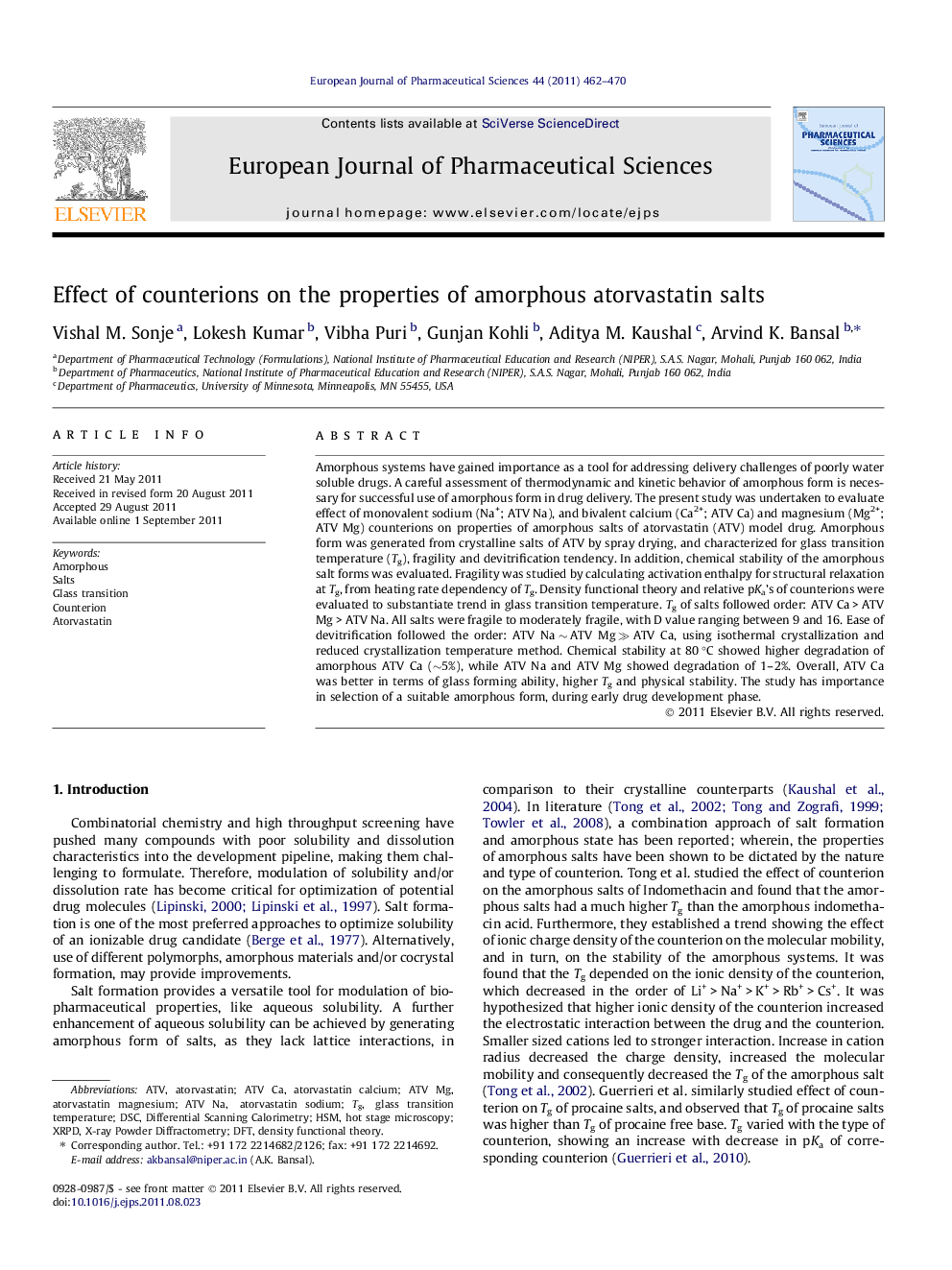| Article ID | Journal | Published Year | Pages | File Type |
|---|---|---|---|---|
| 2481296 | European Journal of Pharmaceutical Sciences | 2011 | 9 Pages |
Amorphous systems have gained importance as a tool for addressing delivery challenges of poorly water soluble drugs. A careful assessment of thermodynamic and kinetic behavior of amorphous form is necessary for successful use of amorphous form in drug delivery. The present study was undertaken to evaluate effect of monovalent sodium (Na+; ATV Na), and bivalent calcium (Ca2+; ATV Ca) and magnesium (Mg2+; ATV Mg) counterions on properties of amorphous salts of atorvastatin (ATV) model drug. Amorphous form was generated from crystalline salts of ATV by spray drying, and characterized for glass transition temperature (Tg), fragility and devitrification tendency. In addition, chemical stability of the amorphous salt forms was evaluated. Fragility was studied by calculating activation enthalpy for structural relaxation at Tg, from heating rate dependency of Tg. Density functional theory and relative pKa’s of counterions were evaluated to substantiate trend in glass transition temperature. Tg of salts followed order: ATV Ca > ATV Mg > ATV Na. All salts were fragile to moderately fragile, with D value ranging between 9 and 16. Ease of devitrification followed the order: ATV Na ∼ ATV Mg ≫ ATV Ca, using isothermal crystallization and reduced crystallization temperature method. Chemical stability at 80 °C showed higher degradation of amorphous ATV Ca (∼5%), while ATV Na and ATV Mg showed degradation of 1–2%. Overall, ATV Ca was better in terms of glass forming ability, higher Tg and physical stability. The study has importance in selection of a suitable amorphous form, during early drug development phase.
Graphical abstractFigure optionsDownload full-size imageDownload as PowerPoint slide
